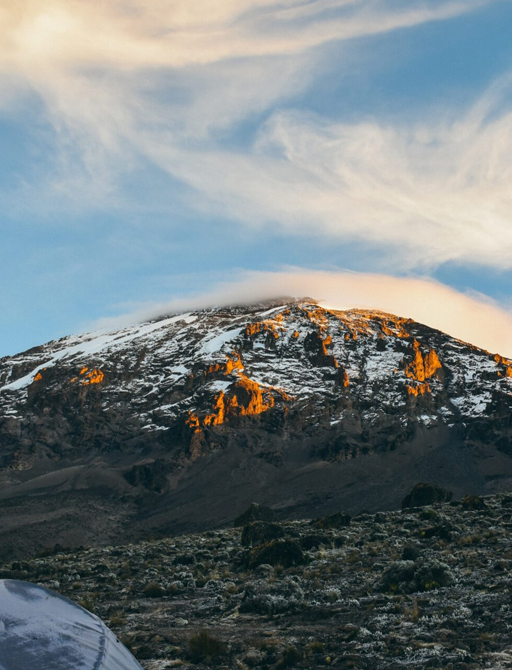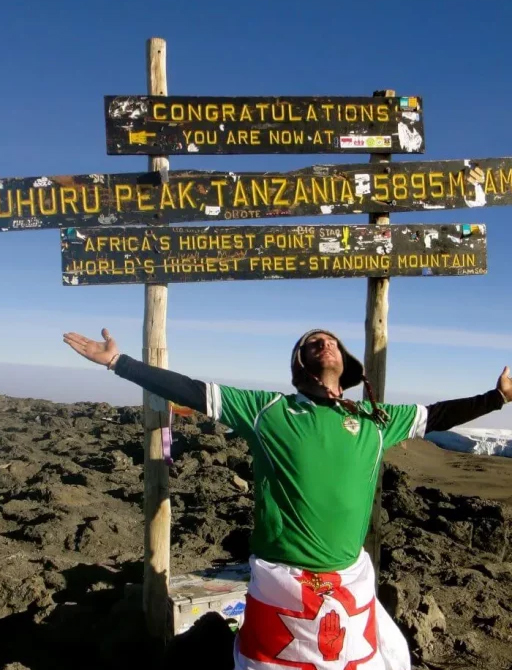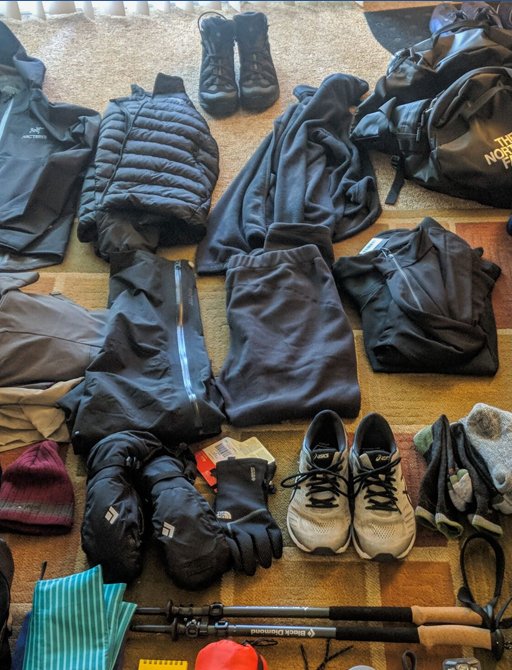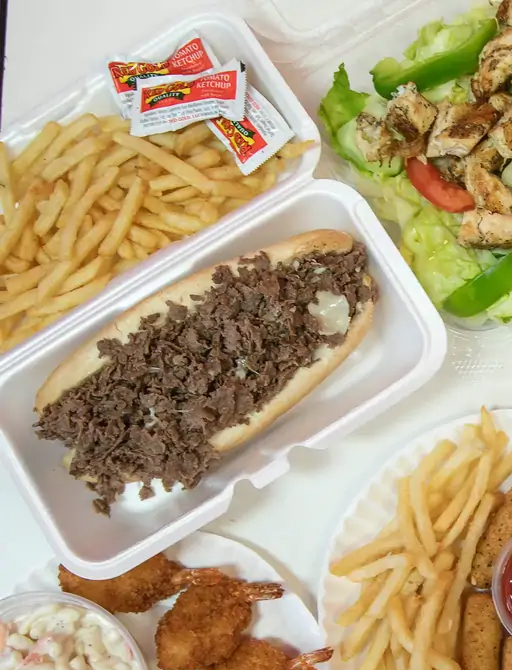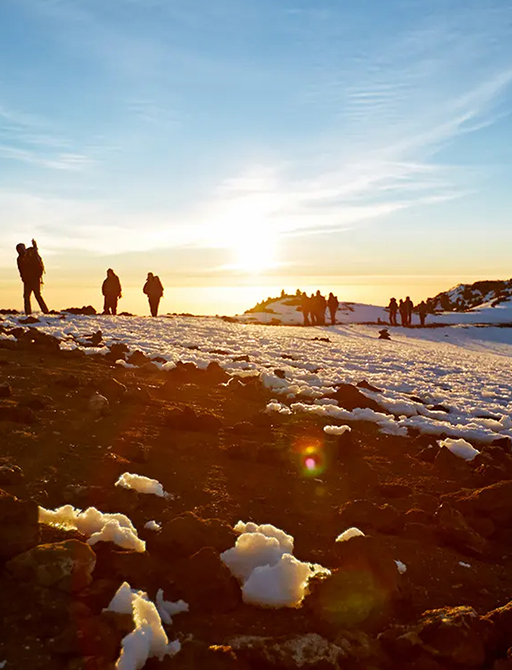How Long Does It Take To Climb Kilimanjaro
Welcome To How Long Does It Take To Climb Kilimanjaro
Many travelers planning to climb Mount Kilimanjaro often wonder How Long It Will Take To Climb Kilimanjaro. Well, the duration typically ranges from 5 to 9 days, encompassing both the ascent to the Mount Kilimanjaro Summit and the descent back to the starting point.
Just keep in mind the key thing – the more days you dedicate to the climb, the higher your chances of successfully reaching the summit.
- If you opt for a relatively short 5-day trek, be aware that this choice comes with the lowest summit success rate.
- On the other hand, if you can spare 8 or 9 days for the adventure, your chances of reaching the summit significantly improve.
For a more detailed understanding, it's essential to explore the best routes for Climbing Mount Kilimanjaro and the number of days typically associated with each route.
How Many Days Does It Take to Climb Kilimanjaro On Each Route?
So, How Long Does It Take To Climb Mount Kilimanjaro? The number of days required to Mount Kilimanjaro Climbing can vary significantly based on the route you choose and your climbing experience. Below is a general breakdown of the most common durations:
- 5 to 6 Days: The Marangu Route, often referred to as the "Coca-Cola" route, is the shortest and can be completed in 5 to 6 days. It's ideal for those with limited time but offers less time for acclimatization.
- 6 Days: Climbing Mt Kilimanjaro through the Umbwe Route typically takes about 6 days. This route is known for its steep and challenging ascent.
- 6 to 7 Days: The Machame Route is slightly longer and usually takes 6 to 7 days. It provides better acclimatization opportunities due to its gradual ascent.
- 7 Days: The Rongai Route, which offers a unique perspective of Kilimanjaro, usually takes 7 days. It's less crowded and ideal for those seeking a quieter trek.
- 7 to 8 Days: The Lemosho Route, known for its diverse landscapes, typically takes 7 to 8 days. The Shira Route also takes 7 to 8 days to complete. This route is a variation of the Lemosho Route and offers a scenic and less crowded trek.
- 8 to 9 Days: The Northern Circuit Route is the longest and usually takes 8 to 9 days. It offers the most extended and scenic journey, with a very high summit success rate.
The below table lists each route, sorted by the summit days, their length and the success rate as well:
Kilimanjaro Routes |
Climbing days |
Route Length |
Success rate (approx.) |
Marangu |
5 |
64 kilometers (40 miles) |
65% - 70% |
Umbwe |
6 |
53 Kilometers (32 miles) |
75% - 80% |
Machame |
6 to 7 |
62 km (38.5 miles) |
85% - 90% |
Rongai |
7 |
72 km (45 miles) |
80% - 85% |
Shira |
7 to 8 |
56 km (35 miles) |
80% - 85% |
Lemosho |
7 to 8 days |
70 km (43.5 miles) |
85% - 90% |
Northern Circuit |
8 to 9 days |
96 km (60 miles) |
90% - 95% |
Take Note: These durations are approximate and can vary based on your personal pace and the conditions during your Kilimanjaro climbing tours.
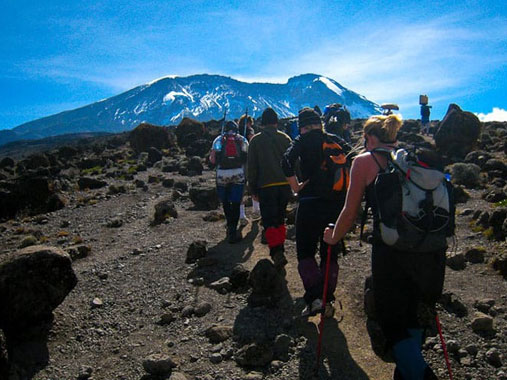
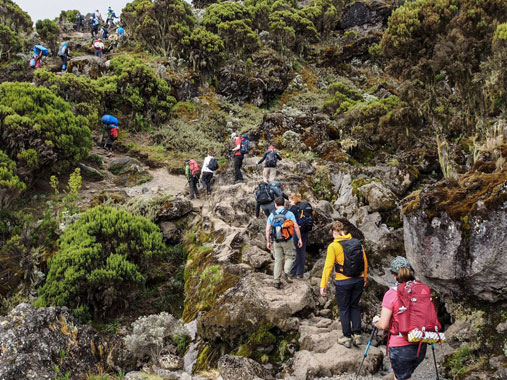
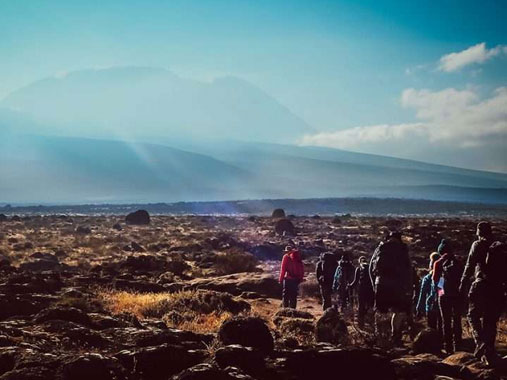
Longer Routes Give You a High Success Rate
One major factor to consider when deciding on the duration of your Kilimanjaro climb is the route's length. Longer Mount Kilimanjaro Climbing Routes generally offer a higher success rate for reaching the summit. Here's why:
- Longer Kilimanjaro Climbing Routes provide more time for your body to acclimatize to the increasing altitude.
- The slower ascent on longer routes gives your body a better chance to adapt. It increases your likelihood of reaching Uhuru Peak, Kilimanjaro's highest point.
Extended durations allow you to immerse yourself in the breathtaking landscapes and enjoy the journey to the fullest.
Our Suggestion: To maximize your chances of summiting Kilimanjaro, consider a longer route with ample acclimatization time.
Factors Affecting How Long It Takes to Climb Kilimanjaro
While exploring How Long Does It Take To Climb Mt Kilimanjaro, remember that various factors affect it beyond route selection. Understanding these factors can help you plan your adventure more effectively:
Your Physical Fitness
Your overall physical condition plays a vital role in determining how quickly you can ascend Kilimanjaro. Being in good shape will make the trek less strenuous and enable you to maintain a steady pace.
Altitude Acclimatization
Acclimatization is essential when climbing to high altitudes. Longer Climbing Routes Kilimanjaro provides more time for your body to adapt to the reduced oxygen levels, decreasing the risk of altitude-related issues.
Climbing Experience
Previous experience with high-altitude trekking can expedite your adaptation to the challenges of Kilimanjaro.
First time climbers might benefit from a more extended duration to acclimatize and adjust to the conditions.
Vital Tip: If you're new to high-altitude treks, consider a longer route to ease into the experience.
How Many Days Does It Take to Descend Kilimanjaro?
Descending from Kilimanjaro usually takes about 2 days. After reaching the summit, you'll spend a night at a high camp (e.g., Barafu Camp or Crater Camp) before continuing your descent to the base.
*The descent days are typically shorter and less physically demanding than the ascent.*
Which Short Route Is the Best to Climb Kilimanjaro for a Limited Time Period?
If you're pressed for time but still want to experience Kilimanjaro's magic, the Marangu Route is your best bet. It's the shortest route, generally completed in 5 to 6 days.
However, keep in mind that the shorter duration means less time for acclimatization, so it's essential to be well-prepared for the altitude.
Keep in Mind: Consider the Marangu Route if you have limited time, but be aware of the potential challenges.
Kilimanjaro Climbing World Record
As of the latest update in September 2021, there are a few notable records related to Mt Kilimanjaro Climbing Tours:
- The fastest ascent and descent of Kilimanjaro is held in August 2014 by Swiss climber Karl Egloff. He completed the challenge in just 6 hours and 42 minutes and 24 seconds.
Remember that breaking records like these requires exceptional physical fitness and experience with high-altitude conditions. Most climbers take a more leisurely approach to fully enjoy the journey and ensure a safe ascent.
Every Step Counts: Your Kilimanjaro Adventure Awaits!
Thus, we found that the answer to the query- How Long Does It Take To Climb Kilimanjaro depends on various factors. While it's possible to complete the climb in as little as 5 days, opting for a longer route with better acclimatization is advisable for a safer and more enjoyable experience.
Now that you have a better understanding of the time commitment involved in Climbing Mount Kilimanjaro, it's time to take the next step. Start planning your adventure today with us! At Galago Expeditions, we understand the importance of a well-planned Kilimanjaro climb. So, whether you choose a shorter or longer route, make it a journey of a lifetime!
Tour Guides
Best Time To Climb Kilimanjaro
Technically, you can climb Mount Kilimanjaro at any given time of year. But there are certain months which will make your climbing experience better and worse. This is why it’s important to know What is the Best Time to Climb Kilimanjaro.
High Season
July and August are the peak months in Mountain Kilimanjaro, so if you’re planning to climb Kilimanjaro during this period, book in well-advanced.
Low Season
If rain is not a big concern, you can climb Kilimanjaro in the wet season and shoulder season which receives fewer numbers of crowds.
Kilimanjaro Climbing Cost
Arguably, Mont Kilimanjaro is the perfect spot for adventure lovers, globally. If you planning to scale this mountain, you show how much it cost to climb it. In this guide, we have done a total breakdown of all the factors that are involved in Kilimanjaro Climbing Cost.
Tour Operator
Typically, your biggest expense will be the fee you pay to your chosen tour operator. This cost is inclusive of several key elements
Park Fees
Conservation fee: $70 per day
Camping fee: $50-$60 per night
Rescue fee: $20 per trip
Kilimanjaro Climbing Gear List
Arguably, Mont Kilimanjaro is the perfect spot for adventure lovers, globally. If you planning to scale this mountain, you show how much it cost to climb it. In this guide, we have done a total breakdown of all the factors that are involved in Kilimanjaro Climbing Cost.
The next essentials are camping gear. Your success rate in Kilimanjaro highly depends upon the camping gear you carry with you. So, make sure you are carrying the high-quality and right gear before you climb Kilimanjaro.
Head Gears are also important aspects of the Kilimanjaro Gear List. They protect you from the blistering sun during Kilimanjaro Climbing. Here are some of our recommended head gears to you must need to consider.
Kilimanjaro Foods
During your Mount Kilimanjaro Climbing expedition, you can expect a diverse range of food options that provide a perfect blend of local African cuisine and high-energy mountaineering meals.
High-Energy
During the actual Kilimanjaro Climb, meals are designed to provide the calories and nutrition needed for intense physical effort. Porters and chefs, using portable stoves, cook meals even at the high camps.
Breakfast
Hot drinks like tea, coffee, or hot chocolate
Porridge or cereal for a healthy start
Scrambled eggs, bacon, and sausages for protein
Fresh fruits and toast with butter, jam, or marmalade.
Kilimanjaro Altitude Sickness
Altitude sickness, also known as Acute Mountain Sickness (AMS), is a significant risk when ascending Kilimanjaro due to the rapid elevation gain.
Symptoms
Recognizing the signs of altitude sickness can be vital in ensuring a successful and safe Kilimanjaro Climb.
Preventing
There are several ways to mitigate the risk of AMS during a Mount Kilimanjaro Climbing expedition:
Tipping In Kilimanjaro
Gratuities or Tipping in Kilimanjaro, at the end of a successful climb, carry a deep-seated tradition and noteworthy significance. It's not only a token of gratitude but an essential part of local customs.
Helicopter
With the mission of making Kilimanjaro Africa's safest tourist destination, search, and rescue companies operate high-altitude helicopters crewed by trained medical personnel.
Why Is Tipping
The porters, guides, and cooks are key to your success in summiting Mount Kilimanjaro. They not only ensure you are safe and comfortable during your journey but also provide emotional support when the climb gets tough.
Climbing Kilimanjaro Faq
Climbing Kilimanjaro is a physically demanding, but rewarding adventure.
Mount Kilimanjaro
The nearest airport to Kilimanjaro is Kilimanjaro International Airport (JRO) in Tanzania. Many international flights connect through Dar es Salaam or Nairob
Do I Need A Visa
Yes, a visa is required for most visitors to Tanzania. It can be obtained online, from a Tanzanian embassy, or on arrival.
Electronic Gadgets On Mount Kilimanjaro
Climbing Mount Kilimanjaro, one of the Seven Summits in the world, is a dream come true for many adventure enthusiasts. And to enhance your experience and document this journey, electronic gadgets are invaluable.
Smartphones
In this era of advanced technology, smartphones are a must-have gadget, even on the peaks of Kilimanjaro.
Cameras
Despite smartphones being handy, nothing beats the quality and control offered by a dedicated camera.
kilimanjaro Rescue
Kilimanjaro Rescue represents the crucial emergency procedures designed to swiftly respond and evacuate climbers who face health crises or other emergencies while ascending Mount Kilimanjaro.
Helicopter
With the mission of making Kilimanjaro Africa's safest tourist destination, search, and rescue companies operate high-altitude helicopters crewed by trained medical personnel.
Altitude Sickness
Your safety is our number one priority, and we aim to provide you with all the information needed to prevent and deal with altitude sickness.
Kilimanjaro Porters
Scaling Kilimanjaro is an immense feat, made feasible by the dedication of porters who tirelessly carry heavy loads and prepare camps for climbers.
Kilimanjaro Porters
The Kilimanjaro Porters comprises a team of committed individuals tasked with helping tourists in carrying their gear during the trek.
Key Responsibilities
The main job of a porter is to carry all the luggage belonging to the entire team. The list of items includes gear for each climber, tents, oxygen bottles, stretchers, medical kits, food, sleeping bags, hyperbaric chambers, and toilets.
Kilimanjaro Private Toilet Tents
Discover the ultimate comfort and convenience during your Mount Kilimanjaro expedition with our private toilet tents.
Privacy Amidst
One of the significant advantages of Kilimanjaro Private Toilet Tents is the privacy they provide.
Hygiene
Maintaining proper hygiene and sanitation is essential while Climbing Mount Kilimanjaro.
Kilimanjaro How Long Does It Take
Many travelers planning to climb Mount Kilimanjaro often wonder How Long It Will Take To Climb Kilimanjaro.
How Many Days
The number of days required to Mount Kilimanjaro Climbing can vary significantly based on the route you choose and your climbing experience.
Longer Routes
One major factor to consider when deciding on the duration of your Kilimanjaro climb is the route's length.
Customize Your Trip
To start planning your tour with us, you can create an itinerary from scratch, or modify one of our suggested itineraries. Want to visit a beautiful destination, or start an adventure to reach the top? We will make it happen.
How Long Does It Take To Climb Kilimanjaro FAQs
The duration of Climbing Mount Kilimanjaro usually ranges from 5 to 9 days. The specific number of days depends on the Kilimanjaro Climbing Route you choose. Some shorter routes like Marangu taking around 5 to 6 days, while longer routes like the Northern Circuit may require 8 to 9 days..
Show more...The Marangu Route is the shortest route, typically taking about 5 to 6 days to Climbing Mount Kilimanjaro. However, it's essential to note that while it's shorter in terms of days, it often has lower summit success rates due to limited acclimatization opportunities compared to longer routes..
Show more...Yes, Mount Kilimanjaro Climbing Routes like the Lemosho and Northern Circuit take 7 to 9 days and offer better success rates because they allow for more gradual acclimatization..
Show more...For first time climber, it's advisable to choose a longer Kilimanjaro Climbing Route, such as Machame or Lemosho, taking 7 to 8 days, to ensure better acclimatization and higher success rates..
Show more...The descent from Kilimanjaro typically takes about 2 days. After reaching the summit, climbers usually spend one night at a high camp, such as Barafu Camp, before completing the descent to the base. The descent days are shorter and less physically demanding compared to the ascent during your Mount Kilimanjaro Climbing Tours.Top of Form.
Show more...Testimonials
What Client Say About Us?My dear Venance, I haven't really finished unpacking my bags yet, but I already want to tell you that we all had a great pleasure spending these holidays in Tanzania, that the organization of the trip was excellent and that we loved it. our two guides who were really fantastic
Francois
North ParkMagnificent trip beyond what I had imagined! Fred was on top, we had a hard time leaving him. A big thank you for arranging our stay.
Christopher
North ParkHello Venance, We are back from the Kili and the safari. Everything went great! Thank you, for your idea of Lake Natron, it was really great these 2 days. Obviously the Kilimanjaro, incomparable compared to the safari. We did well to do it first, and we all got there.
